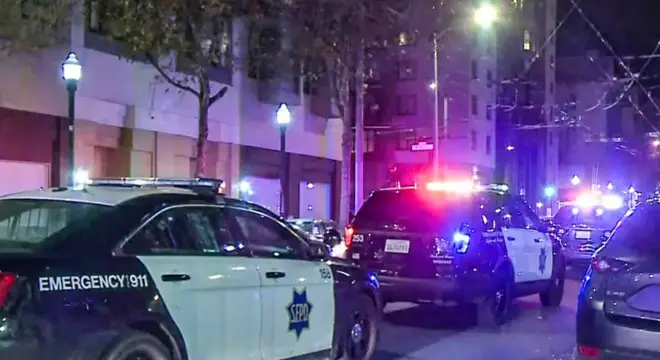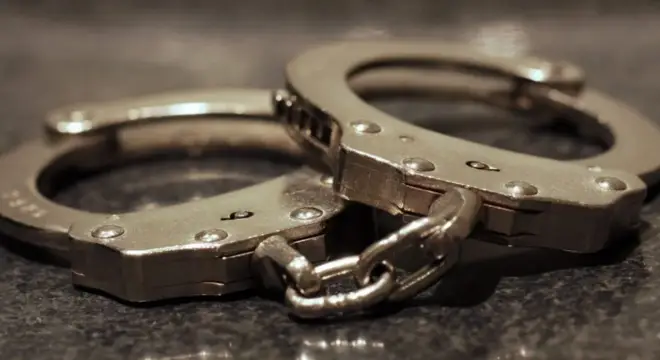East Louisville Home Fire Displaces Resident, Fire Department Responds
I still remember scrolling through the early Sunday morning news and seeing that a home in East Louisville had caught fire. It’s the kind of story that stops you in your tracks, not just because a house was lost, but because thankfully, no one was hurt. The fire happened on the 1700 block of Seven Green Lane, right near the Polo Fields Golf Club, in a two-story home that ended up being heavily damaged.
When Anchorage Middletown Fire & EMS (AMFEMS) arrived, flames were already showing through the roof. I can only imagine what it looked like from the street—an entire home engulfed while neighbors watched in shock. The crews immediately went into action, starting with an exterior attack to control the large volume of fire before carefully working inside to put out the remaining hot spots.
Even though the house was destroyed, the lone occupant was fortunately out of town, so no injuries were reported. And in a stroke of luck, the fire didn’t spread to the nearby homes. Reading about it made me think about how quickly life can change in a matter of minutes—and how important it is to be prepared for the unexpected.
Have you ever thought about what you’d do if a fire suddenly broke out in your home? I’d love to hear how you’d handle it.
Firefighting Efforts and Containment
When I looked at the AMFEMS Facebook post that morning, I could see the firefighters in action. They had to go straight to an exterior fire attack because the flames were pouring through the roof of that two-story house. It wasn’t just about putting out a fire—it was about keeping the situation under control before it could spread.
Once the exterior was contained, the crews carefully moved inside to extinguish the remaining hot spots. I found myself thinking about the strategy here: they prioritized safety while still making sure the fire didn’t threaten nearby homes. And it worked—the blaze didn’t jump to the neighboring houses, which is a relief when you consider how close-knit many of these communities are.
Watching these firefighters at work makes me realize how critical preparation and training are. If you ever find yourself in a situation like this, knowing that professionals have a plan can give you some peace of mind—but it also reminds you to have your own safety measures ready at home.
Impact on the Resident and Community
Reading the WHAS11 coverage, I felt a mix of relief and concern. The homeowner was out of town, which meant no one was injured—but the displacement is still a huge disruption. One moment, your home is the center of your life, and the next, it’s gone.
Even though the house itself was lost, the surrounding community was spared from direct harm. I imagine neighbors stepping outside, checking their own homes, maybe even helping each other assess risks. It’s a reminder that even when tragedy strikes, the way a community reacts can make a big difference.
For someone like me, reading this makes it impossible not to think about personal preparedness. How would I secure my important documents? Where would my family go? These are questions every homeowner should consider before it’s too late.
Unfortunately, not all fire stories have such a fortunate outcome. In DeWitt, a home fire turned deadly, a single incident claimed a life, reminding us how quickly fires can escalate.
Understanding the Fire Cause
Right now, the cause of the fire is officially under investigation. I’ve been following these updates closely because it’s natural to ask: why did this happen? Even though AMFEMS hasn’t released a conclusion, knowing the common causes of home fires gives us insight.
Most residential fires start from things we often overlook: electrical problems, cooking accidents, heating equipment malfunctions, or even unattended appliances. In Louisville and across the US, these remain the top triggers.
I personally find it sobering to realize that many fires could be prevented with small, proactive steps—checking wiring, keeping flammables away from heat sources, and staying alert while cooking.
Even without knowing the exact cause of this fire, I feel it’s worth thinking about your own home. What risks might be hiding in plain sight?
Lessons and Prevention Tips for Homeowners
I want to be honest here: no one likes thinking about fires in their own home. But after reading this story, I can’t help but reflect on practical steps we can take.
Start with the basics: make sure your smoke alarms are functional and placed in every key area. Check circuits, wiring, and heating equipment regularly. Even small things, like not leaving cooking unattended or using fire-resistant materials for certain areas, can make a difference.
You should also think about emergency preparedness. Have an escape plan with your family. Keep an emergency kit and important documents in a safe, accessible place. Know your local fire department contacts, and don’t hesitate to reach out for guidance. It’s one thing to read about a fire, and another to feel prepared if it ever happens to you.
You can also receive real-time updates and safety tips from communities sharing home safety alerts through WhatsApp groups—these can be surprisingly useful for quick guidance during emergencies.
Fire Trends and Local Safety Context

I looked at some recent data for Jefferson County, and residential fires, while not overwhelmingly common, still happen with enough frequency to warrant attention. A single event like the Seven Green Lane fire might seem isolated, but when you zoom out, patterns emerge—electrical issues and cooking accidents are recurring culprits.
What struck me is the role of local fire services like AMFEMS in keeping the community safe. Quick response times and trained crews are the reason the fire didn’t spread, and why no one was hurt. As a resident, it’s comforting, but it also makes me think: I can’t rely solely on emergency services. Personal vigilance and preparedness are equally important.
When I think about East Louisville, it’s clear that having the right combination of community awareness, homeowner preparedness, and professional response is what keeps neighborhoods safe. It’s not just about luck—it’s about planning and action.
Learning from past incidents can make a difference—like the Denver Metro home fire that tragically affected both residents and pets, showing how preparedness extends beyond human safety.
Next Steps and Resources for Displaced Homeowners
After reading about this fire, I kept thinking about the homeowner—how overwhelming it must be to return and face a damaged home. Right now, the official investigation is ongoing, and authorities will release findings once they determine the cause. Keeping an eye on updates from AMFEMS or local news like WHAS11 will give you the most accurate information.
If you ever find yourself in a similar situation, knowing your resources can make all the difference. Contact your insurance company immediately to start claims, and document the damage with photos or videos if it’s safe to do so. Local organizations like the Red Cross or community assistance programs in Louisville can provide temporary relief or guidance.
I also encourage residents to stay informed and engaged. Follow your local fire department’s social media channels, sign up for community alerts, and participate in neighborhood safety initiatives. Being proactive can help not only you but also your neighbors if disaster strikes.
Have you checked recently what resources are available in your area if something unexpected happens? It’s worth taking a few minutes today—it could save a lot of stress later.
Even in Indiana County, an overnight house fire claimed two young lives, highlighting the importance of proactive fire prevention and emergency planning for families.
Key Takeaways for Louisville Residents
Here’s what I want you to remember after reading about the Seven Green Lane fire:
- Safety first: The quick response by AMFEMS prevented injuries and limited property damage.
- Preparation matters: Smoke alarms, escape plans, and emergency kits aren’t optional—they’re lifesavers.
- Stay aware: Electrical checks, cooking vigilance, and fire-resistant materials can prevent disasters.
- Community counts: Knowing your neighbors, local fire services, and resources strengthens resilience.
- Act early: Displacement can happen fast; knowing what to do immediately saves time and stress.
Reading about this fire made me realize how fragile yet manageable life at home can be. I hope it motivates you to take a few practical steps to protect your home and your family.
I’m curious—what’s one thing you’ll do differently in your home after reading this story?
If you want to stay updated on similar home safety stories or learn more about preventing residential disasters, check out our website Build Like New for practical tips and real-life cases.
Disclaimer: The information in this article is based on available reports and official sources at the time of publication. It is intended for general informational purposes and should not replace professional advice. Readers should verify details and follow guidance from local authorities in case of emergencies.


